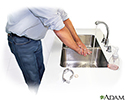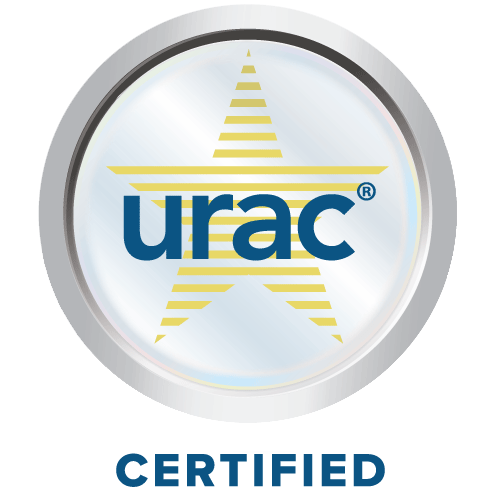Handwashing
Hand washing; Hand-washing; Washing your hands; Handwashing - COVID-19; Washing your hands - COVID-19
Washing your hands often during the day is an important way to help reduce the spread of germs and prevent illness. Learn when you should wash your hands and how to wash them properly.
Information
WHY YOU SHOULD WASH YOUR HANDS OFTEN
Nearly everything we touch has germs on it. This includes bacteria, viruses, fungi, and parasites that can make us sick. You don't have to see dirt on an object for it to spread germs. If you touch something with germs on it, and then touch your own body the germs can spread to you. If you have germs on your hands and touch something or shake someone's hand, you can pass the germs on to the next person. Touching foods or drinks with unwashed hands can spread germs to the person who consumes them.
Washing your hands often during the day can help prevent the spread of a number of different illnesses. Here are a few examples:
- COVID-19 - Stay up to date with the latest information from the Centers for Disease Control and Prevention and the National Institutes of Health
- Flu
- Common cold
- Viral or bacterial gastroenteritis
- Food poisoning
- Hepatitis A
- Giardia
WHEN TO WASH YOUR HANDS
You can protect yourself and others from illness by washing your hands often. You should wash your hands:
- After using the toilet
- After blowing your nose, coughing, or sneezing
- Before, during, and after preparing food
- Before eating food
- Before and after putting in contact lenses
- After changing diapers, helping a child use the toilet, or cleaning up a child who used the toilet
- Before and after cleaning a wound or changing a dressing
- Before and after caring for someone at home who is sick
- After cleaning up vomit, urine, or stool
- After petting, feeding, cleaning up after, or touching an animal
- After touching garbage or compost
- Any time your hands have dirt or grime on them
HOW TO WASH YOUR HANDS
There is a proper way to wash your hands that works best to get them fully clean. For cleaning your hands, all you need is soap and running water. Soap lifts dirt and germs from your skin, which is then washed away by the water.
- Wet your hands with cool or warm running water. Turn off the tap (to conserve water), and apply soap to your hands.
- Lather your hands with the soap for at least 20 seconds (the time it takes to hum "Happy Birthday" twice). Wash between your fingers, wash the back of your hands, the backs of your fingers, and wash your thumb. Wash your nails and cuticles by rubbing them into the soapy palm of your opposite hand.
- Turn the tap back on and rinse your hands well with running water. Turn off the tap.
- Dry hands on a clean towel or air dry them.
Soap and water work the best, but if you don't have access to them, you can use hand sanitizer. Hand sanitizer works nearly as well as soap and water to kill germs.
- Use hand sanitizer that is at least 60% alcohol.
- Apply sanitizer to the palm of one hand. Read the label to see how much to apply.
- Rub the sanitizer all over your hands, fingers, fingernails, and cuticles until your hands are dry.
- Soap and water are preferable to hand sanitizer if the hands are visibly soiled or dirty.
References
Centers for Disease Control and Prevention website. About handwashing. www.cdc.gov/clean-hands/about/?. Updated February 16, 2024. Accessed November 11, 2024.
Centers for Disease Control and Prevention website. Hand sanitizer facts. www.cdc.gov/clean-hands/data-research/facts-stats/hand-sanitizer-facts.html?. Updated April 17, 2024. Accessed November 11, 2024.
Centers for Disease Control and Prevention website. Handwashing facts.www.cdc.gov/clean-hands/data-research/facts-stats. Updated April 17, 2024. Accessed November 11, 2024.
Review Date: 10/11/2024









